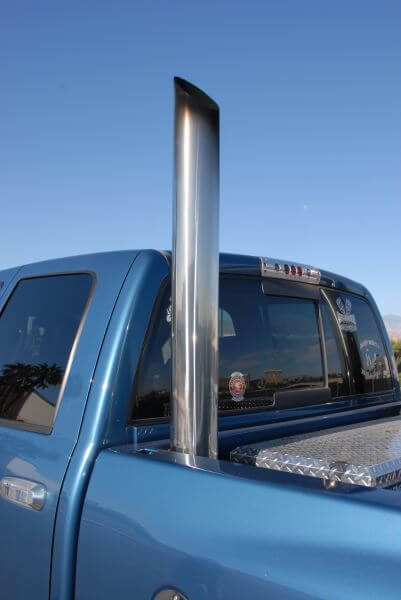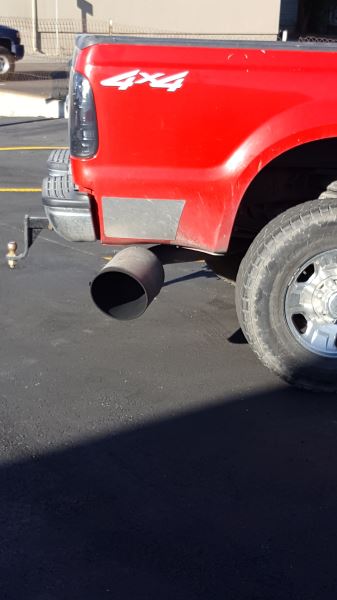I heard a saying one time that supposedly gets shared by members of the military: “Always keep in mind that your weapon was made by the lowest bidder.” Yikes. In a lot of ways, the same can be said of some of the OEM parts on our trucks. I’m sure we all have horror stories about things breaking at the worst possible time, or even just things plain missing. On the bright side, however, that means there’s plenty of room for us to make improvements to our vehicles.
One such area is with your exhaust system. A few months ago we featured a bevy of exhaust manufacturers in our monthly roundup, so if you need ideas of who to go with, that’s a great place to start. But let’s talk a little about what an aftermarket exhaust can do for you.

To the uninitiated, it may be little hard to wrap your head around how an exhaust can help your truck. Well, think of it this way: let’s say you’re running an amusement park and you want to be able to serve as many people as you can in a day. How easy should you make it for people to get out of the park? Should there be many exits or just one? Is it multiple wide open gates or a long, skinny corridor with lots of twists and turns? The point I’m trying to make is the easier it is for people to leave, the easier it is to bring in new people.
In the same way, a good, efficient exhaust will have a relatively straight shot out of the engine, with a wide tube that has as few bends and crinkles as possible. This allows the engine to “breathe” better because the exhaust gas escapes quickly, which in turn allows more air and fuel to burn, which in turn increases your power.
Lots of factory exhausts will feature what’s referred to as a “crush bend” to curve the pipes. This is less efficient because it both reduces the diameter of the pipe and the crinkles on it create more surface area on the inside for gases to get hung up on. The other way is called a “mandrel bend,” which is a smooth curve to the pipe, which keeps the same diameter and doesn’t crinkle it up. The air resistance is reduced, so the air flows better.
Another factor that determines the efficiency of your exhaust is the material it’s made out of. Standard systems are made of mild steel, which are less resistant to corrosion and will deteriorate over time. How many times have you seen some Honda’s tailpipe dragging on the ground behind it, throwing out a shower of sparks? That’s because it rusted out due to the low-quality steel. A good aftermarket exhaust system will be made of aluminized or stainless steel, which have far greater corrosion resistance.

This seems...excessive.
You’ve probably noticed that diesel enthusiasts like to have really big exhaust tips on their trucks. What’s the point of having a 6-, 7-, 8-inch exhaust tip? Surely at that point in the exhaust line there’s nothing else that’ll help the exhaust gases out, right? To be completely honest…you’re totally right. There really is no point other than looks. It’s the only part of the exhaust that is normally visible (unless you have a rust problem, like we discussed), so you might as well make it look cool, right?
Finally, aside from your power gains, the most noticeable difference your exhaust will make is its sound. A good exhaust will have a more aggressive growl to it. That’s how you know it’s working! Plus, what’s the point of having a diesel if you can’t annoy your neighbors?